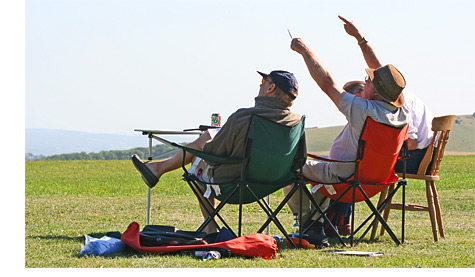Judging: British Aerobatics competition classes or levels
Aerobatic contests are held at the following levels:
| Glider classes | ||||||
|---|---|---|---|---|---|---|
| Power classes | ||||||
| The Known sequence | The Free Known sequence | Unknown sequences | Final 4 minute Freestyle | Apprentices | Masters | |
| Club | ||||||
| Sports | ||||||
| Intermediate | ||||||
| Advanced | ||||||
| Unlimited | ||||||
| Club | ||||||
| Sports | ||||||
| Intermediate | ||||||
| Advanced | ||||||
| Unlimited | ||||||
For the Club and Sports classes the sequence formats are a subset of those set by the international aerobatics governing and rule setting body CIVA (the Commission Internationale du Voltige Ariénne), whilst for the Intermediate, Advanced power and Unlimited power and glider classes we follow CIVA guidelines as closely as possible to mimic the standards set at world class events. The figures we fly are created from the Aresti Aerobatic Catalogue (Condensed) to ensure adherence to the international CIVA standard for figure and sequence construction, with some simple British Aerobatics additions for the lower classes. The Apprentices and Masters classes are however a British Aerobatics domestic format having Aresti-like figures but with more of a freestyle flavour, established to introduce power pilots to the quite different requirements of Final Freestyle flying.
The Judging process
 Judging an aerobatic sequence involves assessing the flight path and attitude of the competing aircraft as it flies each figure, comparing what you see with the 'ideal' requirements of the rules to identify discrepancies or errors, applying the appropriate downgrades, and then giving each figure a 'points score' from ten down to zero in half-point steps. The process is basically an 'error-spotting' routine, the mark for each figure being based entirely on the degree of 'badness' that is detected rather than the 'goodness' observed. An overall judgement is also made of figure 'positioning' during the sequence, and in glider classes of the 'harmony' of the flight as well.
Judging an aerobatic sequence involves assessing the flight path and attitude of the competing aircraft as it flies each figure, comparing what you see with the 'ideal' requirements of the rules to identify discrepancies or errors, applying the appropriate downgrades, and then giving each figure a 'points score' from ten down to zero in half-point steps. The process is basically an 'error-spotting' routine, the mark for each figure being based entirely on the degree of 'badness' that is detected rather than the 'goodness' observed. An overall judgement is also made of figure 'positioning' during the sequence, and in glider classes of the 'harmony' of the flight as well.
Penalties may also be applied for rule infringements, and if any part of a figure gets more than 90° away from the intended attitude or is simply judged to be entirely wrong it is awarded a 'Hard Zero'. The Chief Judge usually has the final say, after consultation with the other Judges, as to whether a figure should get a 'Confirmed Hard Zero' or not, and if given the 'CHZ' will apply to all Judges grades.
What makes a good aerobatic Judge?
Well, it is not particularly difficult - but it does take patience and practice. The notes on this website describe the basic principles of judging both for potential Judges and interested pilots. The complete official judging procedures are detailed in the current editions of the CIVA Regulations and the British Aerobatics General Rules for the Conduct of Aerobatic Contests and Events. These are obtainable to download from this web or the FAI and the CIVA News websites.

